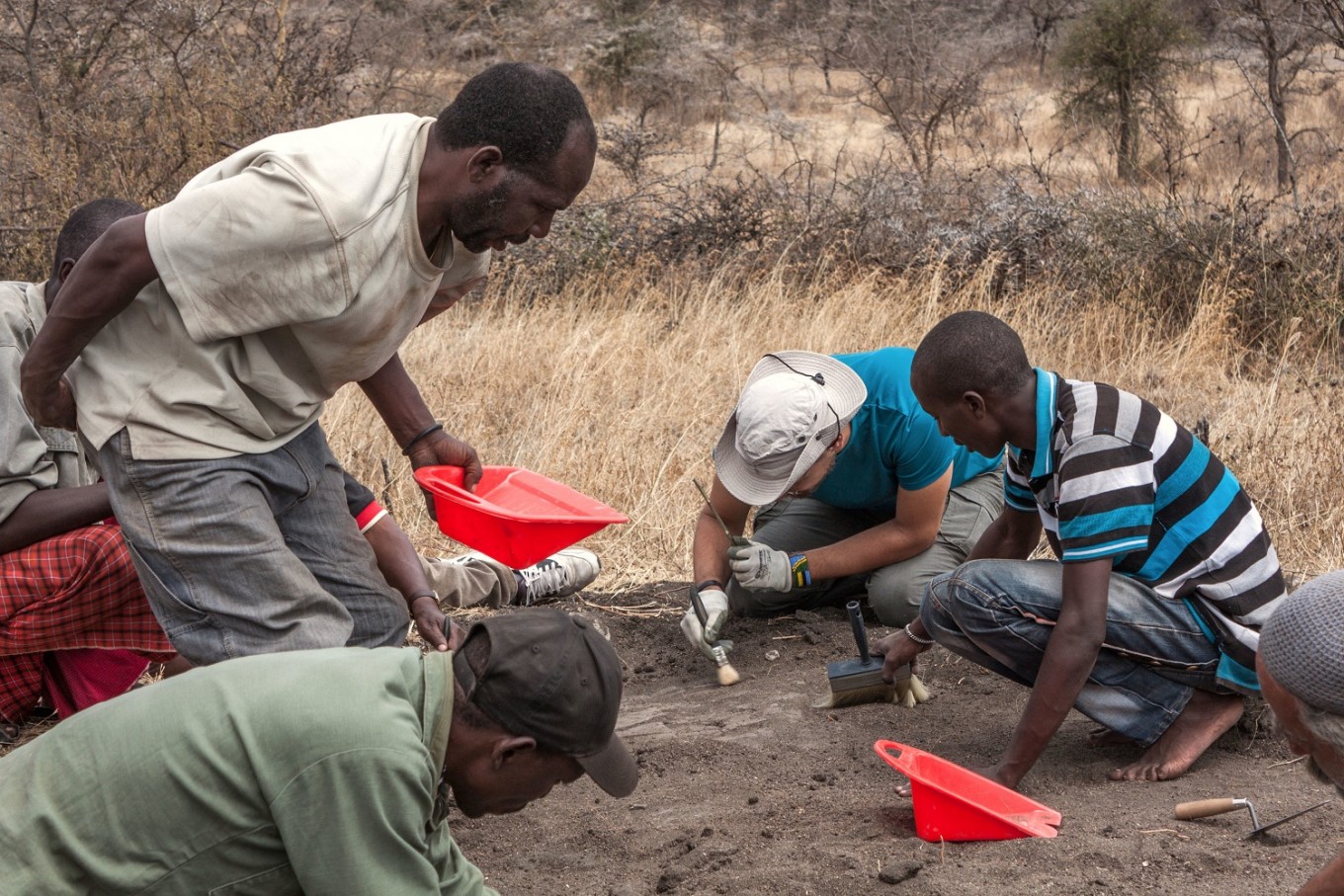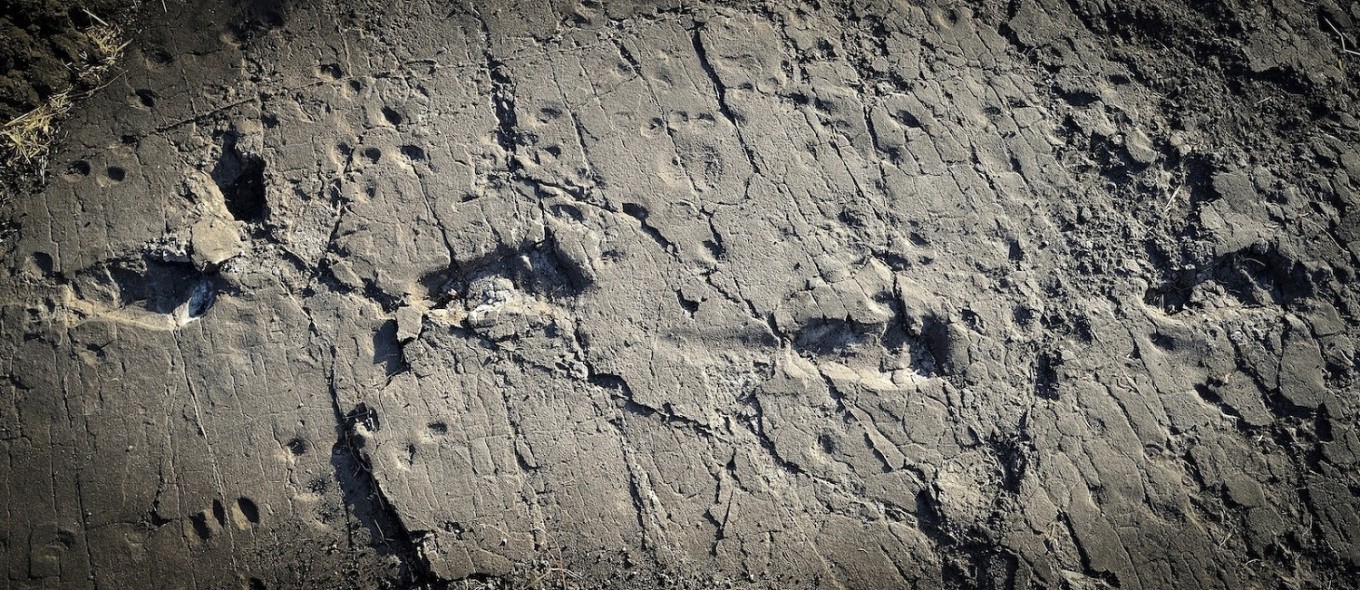Ancient human ancestor was one tall dude, his footprints say
Change Size
 This illustration provided by Dawid A. Iurino in December 2016 shows a reconstruction of the northern Tanzanian Laetoli site 3.66 million years ago, where 14 footprints from a human ancestor, believed to be Australopithecus afarensis, were found. (Dawid A. Iurino via AP/File)
This illustration provided by Dawid A. Iurino in December 2016 shows a reconstruction of the northern Tanzanian Laetoli site 3.66 million years ago, where 14 footprints from a human ancestor, believed to be Australopithecus afarensis, were found. (Dawid A. Iurino via AP/File)
H
e stood a majestic 5-foot-5, weighed around 100 pounds and maybe had a harem. That's what scientists figure from the footprints he left behind some 3.7 million year ago.
He's evidently the tallest known member of the prehuman species best known for the fossil skeleton nicknamed "Lucy," reaching a stature no other member of our family tree matched for another 1.5 million years, the researchers say.
The 13 footprints are impressions left in volcanic ash that later hardened into rock, excavated last year in northern Tanzania in Africa. Their comparatively large size, averaging a bit over 10 inches long (26 centimeters), suggest they were made by a male member of the species known as Australopithecus afarensis.
The prints were found at a site called Laetoli, which is famous for another set of smaller footprints left by other A. afarensis individuals. Those made headlines in the 1970s as the earliest clear evidence of upright walking by our ancestors. The newly discovered prints are only about 160 yards (150 meters) away.
(Read also: South Africa's new human ancestor sparks racial row)

Researchers named the new creature S1, for the first discovery made at the "S'' site. From the footprints, they calculated that he stood about 5-foot-5 (roughly 165 centimeters) and weighed around 100 pounds (about 45 kilograms).
They figured that he loomed at least 8 inches (more than 20 centimeters) above the individuals who made the other tracks, and stood maybe 3 inches (7 centimeters) taller than a large A. afarensis specimen previously found in Ethiopia. "Lucy", also from Ethiopia, was much shorter at about 3 ½ feet (107 centimeters).
The findings are described in a report released Wednesday by the journal eLife. Authors include Giorgio Manzi of Sapienza University in Rome, Marco Cherin of the University of Perugia in Italy, and others.
Nobody knows the ages or sexes of any of the track-makers, although the size of the latest footprints suggest they were made by a male. It's quite possible that the new discovery means A. afarensis males were a lot bigger than females, with more of a difference than what is seen in modern humans, the researchers say. That's not a new idea, but it's still under debate.
The large male-female disparity suggests A. afarensis may have had a gorilla-like social arrangement of one dominant male with a group of females and their offspring, the researchers said.
(Read also: Archaeologist denies BBC report on Terracotta Army)

But not everybody agrees with their analysis of S1's height.
Their estimate is suspect, says anthropologist William Jungers, a research associate at the Association Vahatra in Madagascar who wrote a commentary on the study. That's because scientists haven't recovered enough of an A. afarensis foot to reliably calculate height from footprints, he said in an email.
Philip Reno, an assistant anthropology professor at Penn State who didn't participate in the new work, said he believed the height estimate was in the right ballpark. But he's not convinced that S1 was really taller than the large Ethiopian A. afarensis.
So rather than setting a record, "I think it confirms about the size we thought the big specimens were," Reno said.
Manzi and Cherin said they can't be sure S1 was taller than the Ethiopian specimen. "We only suggest," they wrote in an email.








